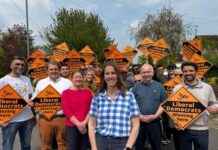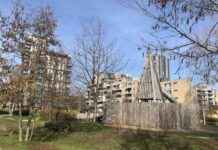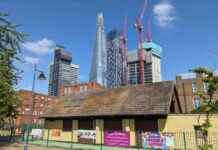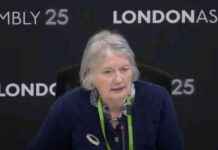Lewis Baston, a seasoned political analyst, showcased his dominance in three London by-elections, capturing the attention of political enthusiasts and residents alike. The diverse landscape of London’s political map was on display, with the spotlight on Barking & Dagenham, Hammersmith & Fulham, and Lillie wards. As we delve into the intricacies of each electoral battleground, a story unfolds that intertwines history, demographics, and the ever-evolving political landscape of the city.
Whalebone Ward: A Legacy of Politics and History
Let’s begin our journey in the intriguingly named Whalebone ward of Barking & Dagenham, a place steeped in history dating back to a stormy day in September 1685. The arrival of a stranded whale along the Thames river set the stage for what would become a defining feature of the area. The tale of the whale’s bones, once displayed proudly outside Whalebone House, now echoes through the streets and roads that bear its name.
As we navigate through Whalebone’s present-day landscape, we encounter a mix of demographics and housing patterns that paint a vivid picture of the community. From the predominantly owner-occupied areas to the vibrant Asian population that adds to the borough’s cultural tapestry, Whalebone emerges as a unique blend of tradition and modernity. The legacy of the unfortunate creature that found its final resting place in the marshes near Dagenham lives on, shaping the political fabric of the ward.
The recent by-election in Whalebone, triggered by the passing of Labour councillor Glenda Paddle, offered a glimpse into the borough’s political dynamics. With Labour’s stronghold evident in previous elections, the outcome seemed predetermined, with only token opposition from the Conservative camp. As the votes were tallied, it was clear that Labour’s Rubina Siddiqui had secured a resounding victory, underscoring the party’s unwavering dominance in the area.
Hammersmith & Fulham: A Political Battleground of Contrasts
Transitioning to Hammersmith & Fulham, we find ourselves in a vibrant borough that has witnessed a seesaw battle between Labour and the Conservatives over the years. The borough’s rich political history, from Labour’s ascendancy in the ’80s to the recent Conservative rule, reflects the diverse ideologies at play in this cosmopolitan hub. Against the backdrop of Brexit and cultural shifts, Hammersmith & Fulham remains a beacon of center-left ideals, embodying the ethos of a progressive urban landscape.
Within the confines of Hammersmith Broadway, a microcosm of the borough’s essence unfolds. The ward’s commercial heart pulsates with activity, juxtaposed against the looming silhouette of Hammersmith Bridge—a poignant reminder of infrastructural challenges. As the ward’s youthful population navigates a landscape defined by social renting and ethnic diversity, the by-election to fill the void left by Emma Apthorp’s departure takes center stage.
Labour’s candidate, Callum Nimmo, emerged as the frontrunner in the by-election, securing a decisive victory that underscored the ward’s allegiance to the party. However, the emergence of Reform candidate Anthony Goodwin as the runner-up hinted at a shifting political landscape, with Conservative and Liberal Democrat candidates vying for attention in a closely contested race. The turnout, though modest, reflected the electorate’s engagement in shaping the borough’s political destiny.
Lillie Ward: A Tapestry of Tradition and Change
Our final stop takes us to Lillie ward in north Fulham, a locale teeming with Victorian terraces and council-built estates that form the backdrop of a changing community. As the ward’s boundaries encompass a blend of historical landmarks and modern developments, the echoes of Labour’s past victories reverberate through its streets. From Clem Attlee Court to John Smith Avenue, Lillie embodies a rich tapestry of Labour heritage, punctuated by pockets of affluence and diversity.
The recent by-election in Lillie shed light on the ward’s political landscape, with Labour’s Lydia Paynter emerging victorious amidst a shifting tide of voter sentiment. The Conservatives, led by Matt Sinclair, made significant inroads, challenging Labour’s traditional stronghold in a ward that had witnessed a surge in support for the party in previous elections. As the electorate grappled with competing visions for the ward’s future, the turnout reflected a community engaged in shaping its political destiny.
In conclusion, Lewis Baston’s commanding presence in the London by-elections underscored the intricate dance of politics, history, and demographics that shape the city’s electoral landscape. From the legacy of a stranded whale in Whalebone to the political battlegrounds of Hammersmith & Fulham and Lillie, each ward revealed a unique narrative of tradition, change, and community. As London’s political map continues to evolve, the voices of its residents echo through the ballot box, shaping the city’s future one election at a time.





















